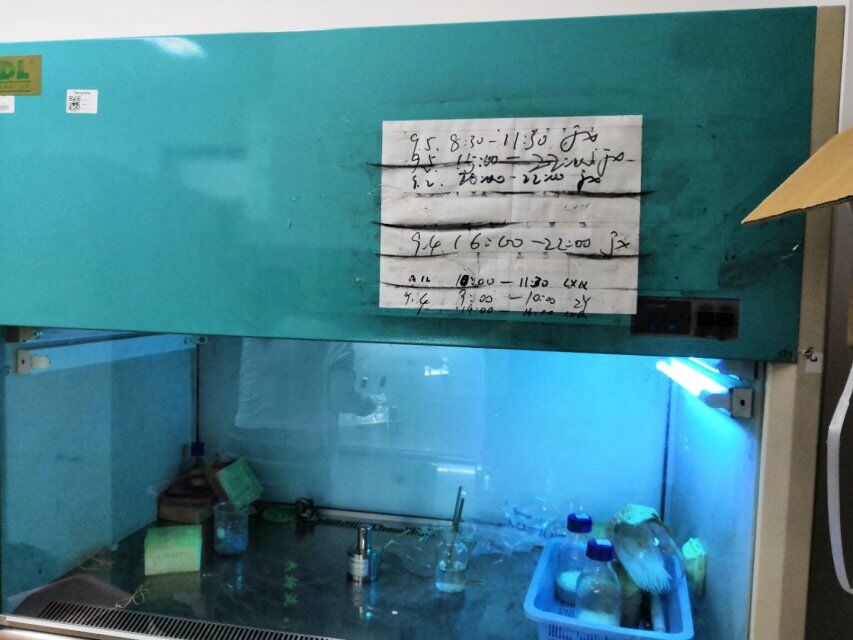Safety & Security
Safe project design
To ensure the biosecurity of our project, Escherichia coli K12 ( E. coli K12), which is non-pathogenic, is employed as the chassis for plasmid transformation as well as fermentation product synthesis. Besides, all the parts that we applied were in Risk Group 1. In this case we can make sure that the biomaterials in our project design are not harmful to human health. In order to protect the environment from being contaminated by the wastes released from our lab, special treatments such as sterilization are used to treat the wastes to prevent leakage of bacteria and DNA. For more details, please visit our safety form(link).
Safe lab work
Our lab is in State Key Laboratory of Microbial Technology in Shandong University. Our primary PI Professor Liang takes charge of lab safety and lab work arrangement, so under his guidance, we set reasonable lab work arrangement and received comprehensive experimental skill and safety training.
Lab work arrangement
We have a well-planned work place, the whole lab is divided into several areas for different usage to make our lab work well organized. We have specialized place for PCR, DNA and protein electrophoresis, bacteria inoculation and culturing, and gas phase chromatography (GC).




Apart from the work place, we also make a schedule on who is on duty today, which means this people must clean our bench and other equipment, check the equipment and consumables such as EP tubes and pipette tips, and turn off the heat devices (except dry ovens and incubators) and lights.
Experimental safety training
To maintain the biosafety of our experimental operation, we have received a lot of safety training in all aspects like safe equipment operation, poisonous reagents usage and delivery, self-protection skills and biological wastes treatment. Energy usage safety, especially heat and electricity is especially emphasised because the energy we use could cause catastrophic consequence, we are asked to turn off the heat and electricity after use.
Also we would like to share some videos that we found pretty useful for experimental safety training.
After these safety training, we made a Dos and Don’ts for our lab work.
- Do write down an experiment plan about what you will do this day and mark something needs to be noticed.
- Don’t operate any equipment that you are not familiar with. Read the operation instruction or consult your instructor before use it.
- Do wear appropriate clothes in the lab, like lab coats and Nitrile Gloves, remember to wear a goggles when operating a stimulant gas.
- Don’t eat or drink in lab, even if your desk is inside the lab.
- Do turn off the heat or electricity after usage.
- Don’t use or deliver any hazardous chemical reagents without instructions.
- Do stop your colleague who is doing something dangerous.
- Don’t throw biological wastes or non-biological wastes without proper treatment.
- Do clean your bench and lab after work according to the duty schedule.
Safe shipment
For submitting our parts to iGEM HQ safely, we first sealed dried DNA in the submission kit, which clearly labelled as DNA without disguise, based on the requirements on parts submission, and then mailed our part kit to GenScript, Nanjing. GenScript has cooperated with iGEM HQ for many years and it mailed the submission kits to the USA for Chinese teams. Our kit poses no risks and is perfectly safe for shipment.


